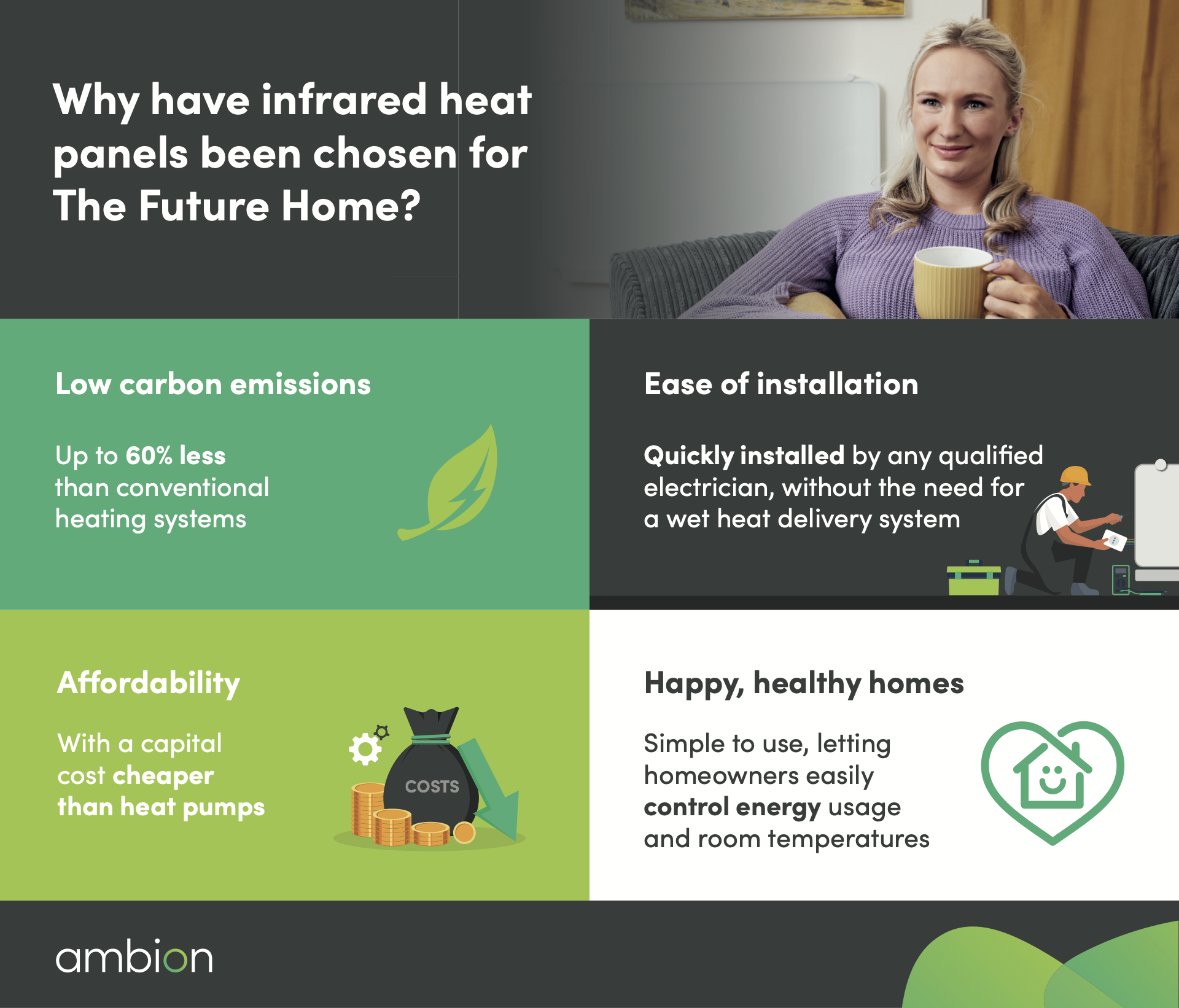Building more sustainable homes is an important piece of the net zero puzzle. Residential properties are responsible for between 17-21% of energy-related carbon emissions globally. In colder climates, the majority of this energy goes towards heating.
In order to reduce global carbon emissions to net zero by 2050, the efficiency and sustainability of new builds is a vital conversation that needs to be had. Coming into effect in 2025, the Future Homes Standard will take great strides in addressing this challenge in the UK, ensuring new builds produce 75-80% less carbon emissions than houses developed under the present Building Regulations.
Of course, developers have been improving the energy efficiency of new homes for some time. Research based on Government Energy Performance Certificate data found new-build house buyers will save on average £2,600 a year in energy bills, due to modern energy efficiency measures. It also reported that newly built homes emit a third of the carbon of older properties, lowering emissions by over 500,000 tonnes.
Clearly, the benefits of modern building practices and the efficiencies delivered by the latest technologies and products are paying dividends.
It’s what consumers want too. When searching for new homes, consumers are increasingly prioritising energy efficiency in the decision-making process, with a quarter (24%) of respondents to one Home Builders Federation survey stating it will be a ‘crucial’ factor when purchasing their next home.
Did you know?
The average new home uses approximately 100kWh per m2, compared with older properties that require an average of 259kWh per m2
While the market is taking positive steps forward towards decarbonisation, net zero is an ambitious goal. As such, housebuilders need to be constantly considering how new housing stock can be heated better.
Furthermore, new homes need to not only be built for the here and now, but be capable of satisfying future requirements too. New developments must be designed to achieve today’s best practice decarbonisation targets, while also being ready to deliver on the potential of net zero carbon homes as soon as possible. As such, it’s essential that selected heating systems work in harmony with other low-carbon technologies. Developers need to be asking themselves, for instance, whether a heating system supports battery, solar solutions, flexi-tariffs and, in due course, Demand Side Response?
Taking all this into consideration, choosing a sustainable heating system and low-carbon energy solution is paramount for housebuilders. From a commercial perspective, it allows you to maintain a competitive edge, while also satisfying consumer demands for greener technologies – as long as they’re easy to use and hassle-free.
But you need the confidence and reassurance that the latest heating technology is worth the investment and will deliver results, and that’s why projects such as Energy House 2.0 are causing such a buzz in the industry.
Foundations for future heating
With the built environment accounting for 40% of the UK’s carbon output, initiatives like Energy House 2.0 are playing a fundamental role in testing the efficiency and sustainability of different heating systems.
Led by the University of Salford, Energy House 2.0 is a research project involving Barratt Developments, Bellway Homes and Saint-Gobain. Bellway Homes has developed a detached house that serves as an ‘eco home’, testing the performance and green credentials of a range of cutting-edge technologies. Named The Future Home, the property is exposed to a range of weather conditions, including wind, snow and solar radiation, and varying temperatures, from -20oC to 40oC.
With the goal of building energy-efficient homes, reducing emissions and supporting local communities and environments, Ambion’s low-carbon infrared heat panels are one of the technologies being tested as part of The Future Home trials.
“The results of this project have the potential to change how we build homes – and how we live in them.”
Jamie Bursnell, Group Technical and Innovations Manager for Bellway Homes

For many properties, such as smaller homes, options such as heat pumps may simply not be feasible because of having only limited space available. This technology can also be complicated to install, requiring pipework, radiators and an external condenser unit. In contrast, and given the demand for building new housing, the fact that Ambion’s lo-carbon infrared heat panels can be quickly installed is being viewed by many in the industry as a key benefit.
“It’s fantastic to be working with innovative companies like Ambion, which will help drive innovation and solutions that address global and domestic energy efficiency challenges.”
Dr Richard Fitton, Reader in Energy Performance of Buildings in the School of Science, Engineering and Environment at the University of Salford
Trialling and testing low-carbon technologies provides proof and evidence for how new builds can be best heated. The Future Home is a groundbreaking project that will strongly influence how we heat our homes going forward.
Yet while so many initiatives are future-focussed, it’s important to bear in mind that the future is fast approaching. In fact, one survey of decision-makers for building products recently discovered 79% of respondents said it was going to be ‘somewhat challenging’ or ‘very challenging’ to meet the Future Homes Standard timeline. However, the Future Homes Standard is coming, and soon, and developers need to be ready to meet its legally binding requirements.
Solutions such as Ambion’s low-carbon infrared heat panels have an essential role to play in heating new homes more sustainably and efficiently, and helping solve the vital next piece of the net zero puzzle.